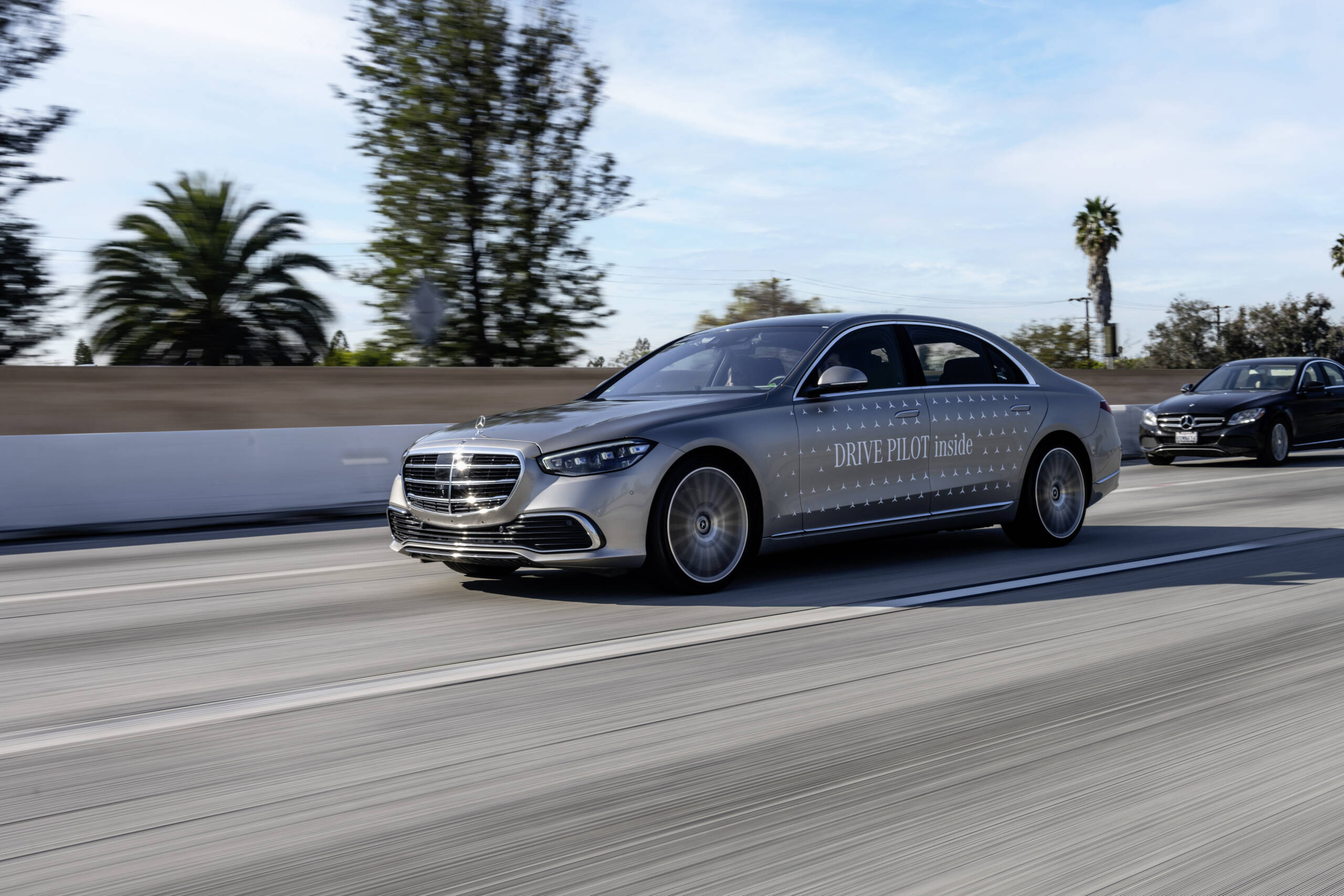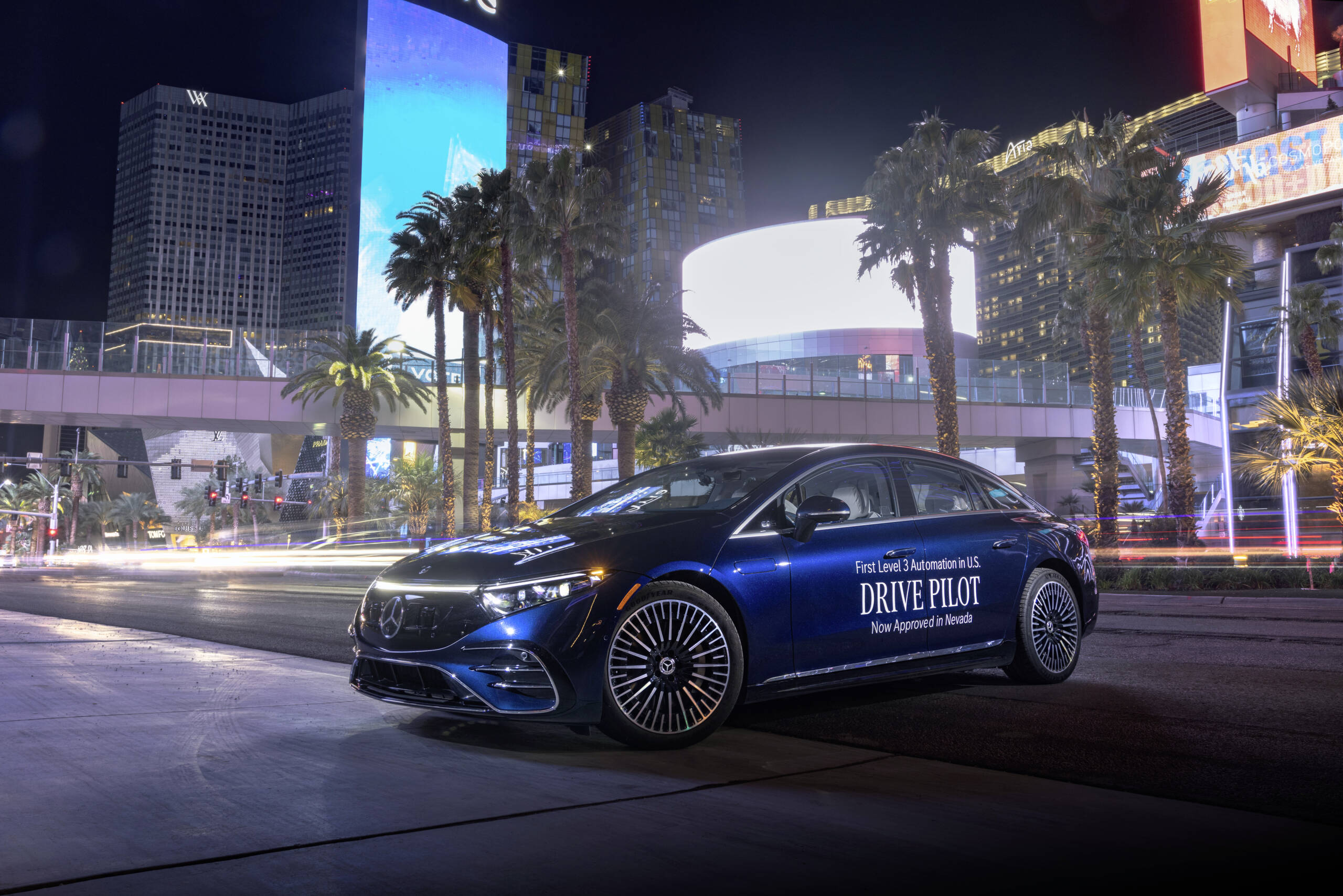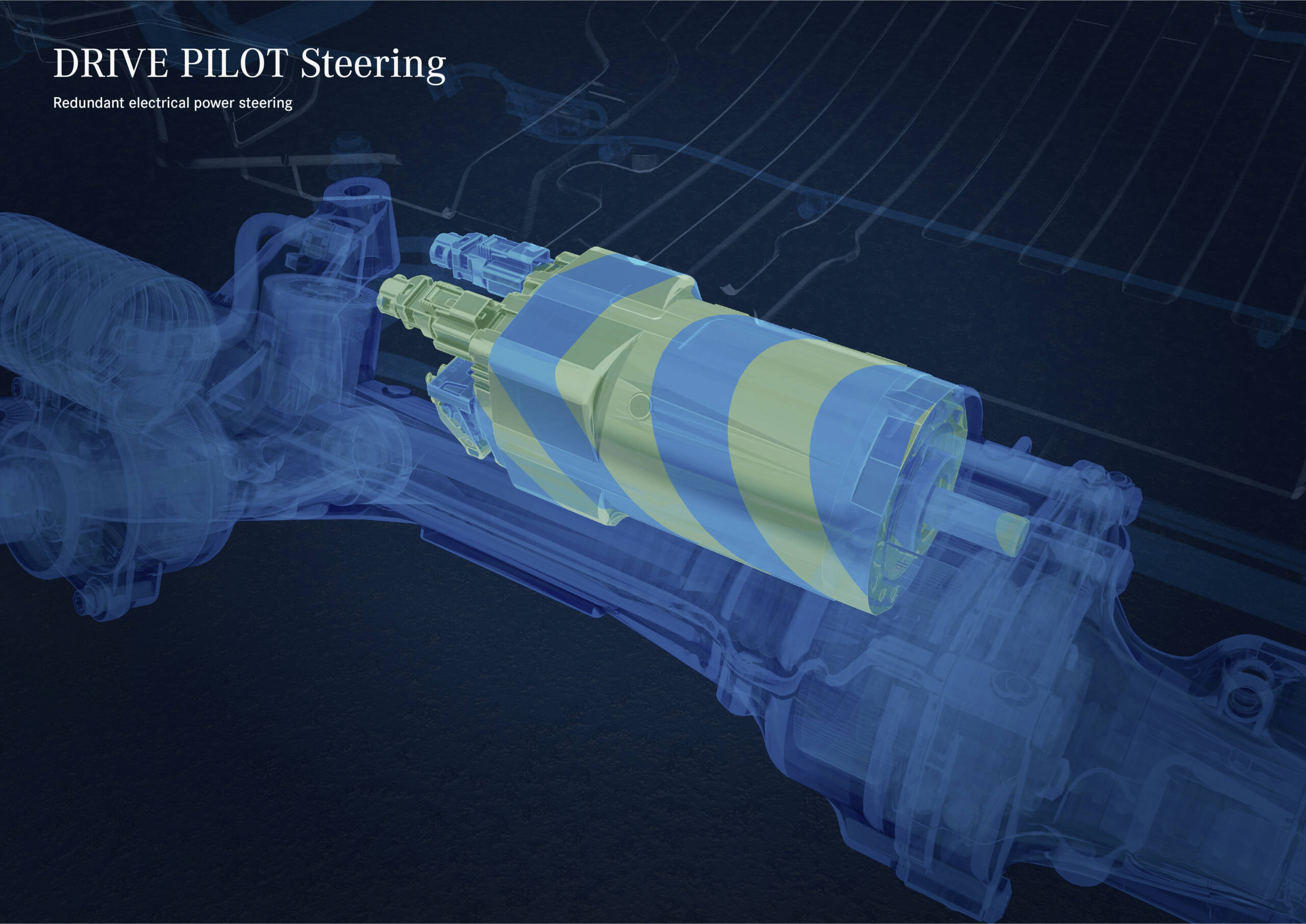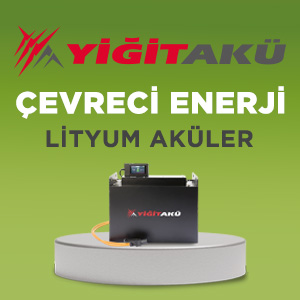
Mercedes-Benz world’s first automotive company to certify SAE Level 3 system for U.S. market
Mercedes‑Benz is the world’s first automotive company to bring SAE Level 3 conditionally automated driving to the U.S., with Nevada being the first state to confirm the compliance of the system with state regulations. This significant milestone sets the ground-breaking Mercedes‑Benz DRIVE PILOT system apart as the first and only SAE Level 3 system in a standard-production vehicle authorized for use on U.S. public freeways. Complying with the requirements of Nevada Chapter 482A for Autonomous Vehicles, DRIVE PILOT will allow the driver to hand over the dynamic driving task to the vehicle under certain conditions. Mercedes‑Benz has the ambition to continue to expand to California later this year with the certification documents already filed with state authorities. DRIVE PILOT will be available in the U.S. market as an option for model year 2024 Mercedes‑Benz S-Class and EQS Sedan models, with the first cars delivered to customers in the second half of 2023.
Mercedes-Benz world’s first automotive company to certify SAE Level 3 system for U.S. market
“In the modern world, time is one of the most precious commodities, and giving back time to our customers is a core element in our strategy to build the world’s most desirable cars. Our DRIVE PILOT takes a major step forward in achieving that, and places us at the very forefront of innovation in the crucially important field of automated driving. DRIVE PILOT demonstrates once more that our pioneering spirit is part of our DNA. Certification in Nevada marks the start of its international rollout and, with it, the dawning of a new era.”
Markus Schäfer, Member of the Board of Management of Mercedes‑Benz Group AG, Chief Technology Officer, responsible for Development and Procurement.

On suitable freeway sections and where there is high traffic density, DRIVE PILOT can offer to take over the dynamic driving task, up to the speed of 40 mph. The control buttons needed for this are located in the steering wheel rim, on the left and right above the thumb recesses. Once conditions are suitable, the system indicates availability on the control buttons. When the driver activates DRIVE PILOT, the system controls the speed and distance, and effortlessly guides the vehicle within its lane. The route profile, events occurring on the route and traffic signs are correspondingly taken into consideration. The system also reacts to unexpected traffic situations and handles them independently, e.g., by evasive maneuvers within the lane or by braking maneuvers.
LiDAR sensor and redundant systems
The top priority for Mercedes‑Benz when introducing such a system is safety, which includes high demands on operational reliability. DRIVE PILOT builds on the surround sensors of the Driving Assistance Package and comprises additional sensors that Mercedes‑Benz considers indispensable for safe conditionally automated driving. These include LiDAR, as well as a camera in the rear window and microphones for detecting emergency vehicles, as well as a road wetness sensor in the wheel well. A vehicle equipped with the optional DRIVE PILOT system also has redundant steering and braking actuators and a redundant on-board electrical system, so that it remains maneuverable even if one of these systems fails and a safe handover to the driver can be ensured.

High-precision positioning system
This high-precision map differs from maps for navigation devices by, among other things, its higher accuracy in the centimetre rather than metre range and its detailed junction and route model. The map data is stored in backend data centres and updated constantly. Each vehicle also stores an image of this map information on board, constantly compares it with the backend data and updates the local dataset as required. All of this enables stable and accurate positioning through a representation of the surroundings that is independent of factors such as shadows or dirty sensors.
A powerful chipset inside the central control unit provides the necessary sophisticated software functions for conditionally automated driving while important algorithms are calculated redundantly within the framework of a modern security architecture.





